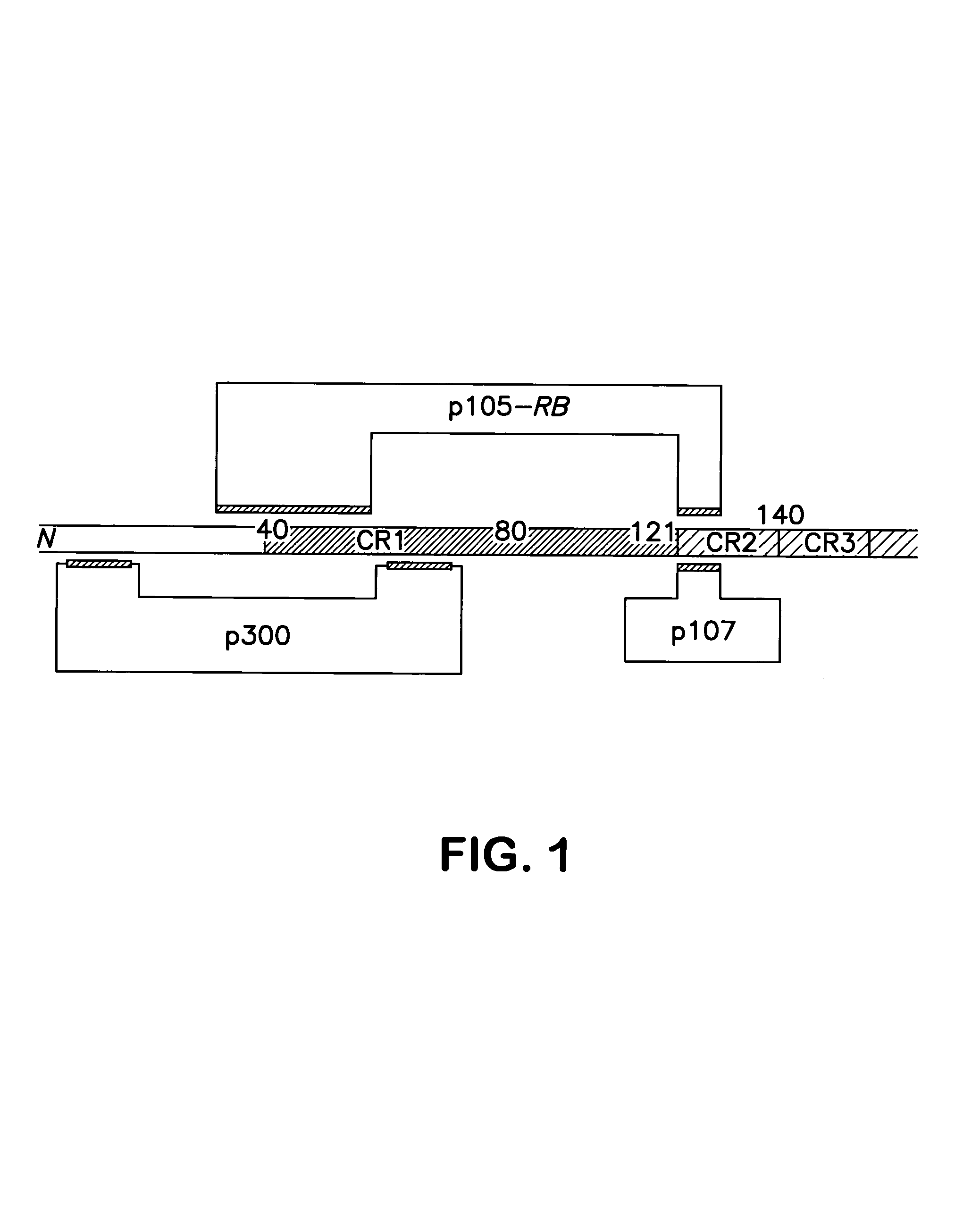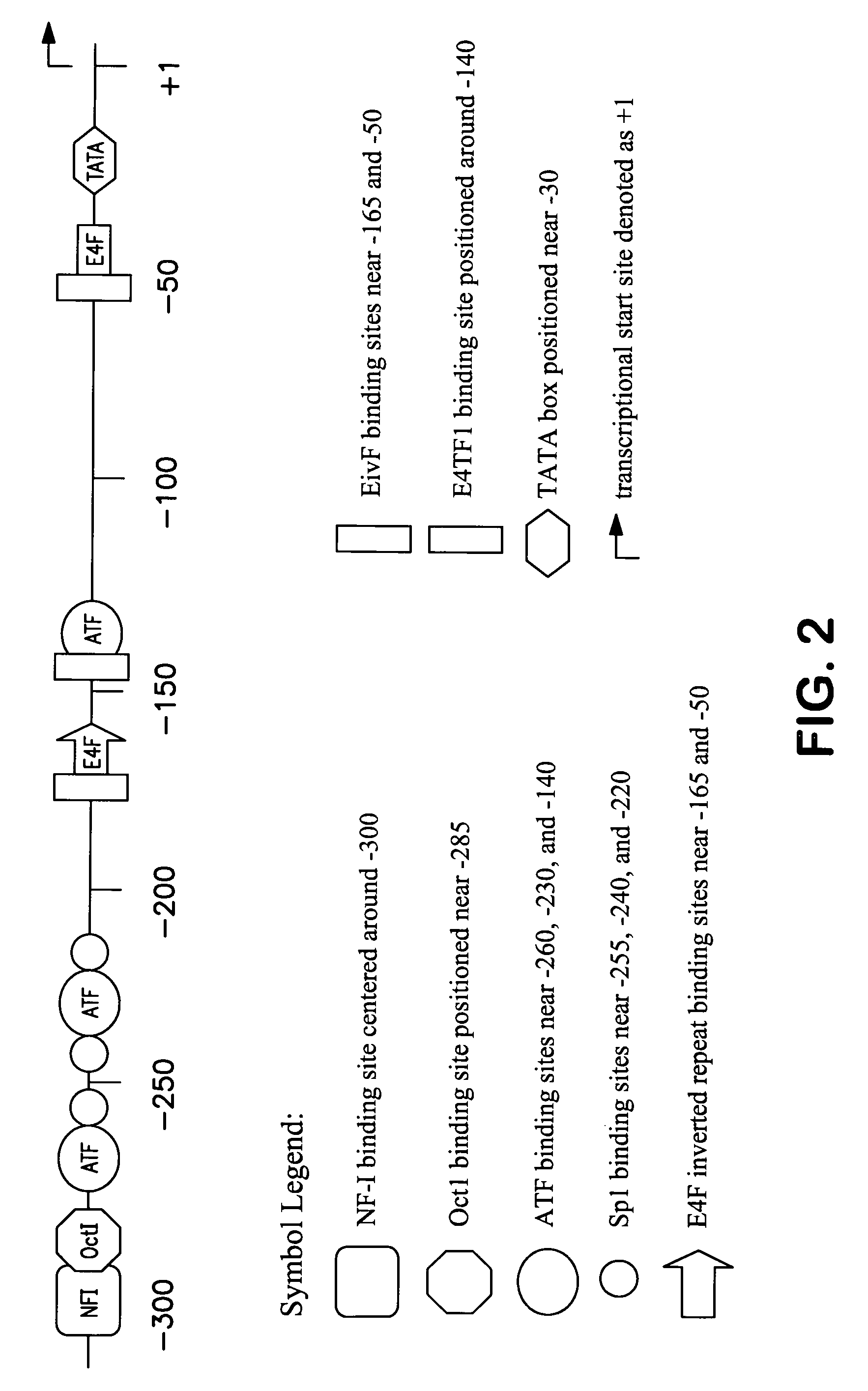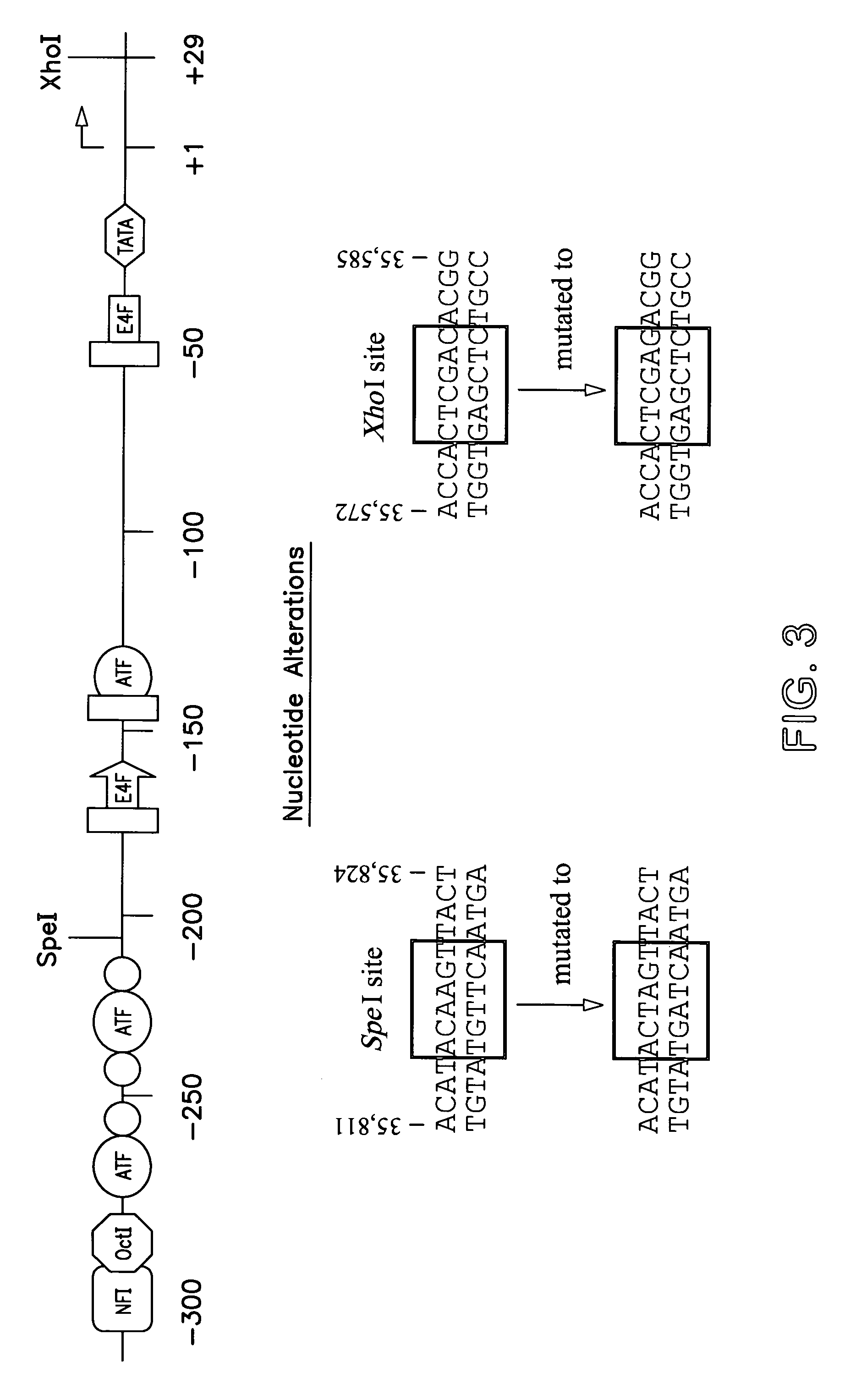Oncolytic adenovirus
a technology of adenovirus and vector, applied in the field of adenovirus vector, can solve the problems of limited success, less efficacy than replicating, and limited success in the direction of dsdna viruses, and achieve the effects of less immunogenic virus, less immunogenic virus, and maximizing
- Summary
- Abstract
- Description
- Claims
- Application Information
AI Technical Summary
Benefits of technology
Problems solved by technology
Method used
Image
Examples
example 1
E2F-1E4 Adenoviral Vector Construction.
[0099]The recombinant plasmid pAd75–100(14) was obtained from Patrick Hearing and contains the Ad5 dl309 fragment from the EcoRI site at 75.9 map units (m.u.) to the right end of the viral genome at 100 m.u. (a BamHI linker is located at 100 m.u.) in pBR322 between the EcoRI and BamHI sites. This EcoRI to BamHI fragment was directly subcloned into Litmus 28 (New England Biolabs) to generate L28:p75–100.dl309. The wild type Ad5 E3 sequence that is missing in dl309 (Ad5 nucleotides 30,005 to 30,750) was restored by replacing the NotI to NdeI fragment in L28:p75–100.dl309 with a wild type NotI to NdeI fragment (Ad5 nucleotides 29,510–31,089) from pAd5-SN (described in U.S. patent Ser. No. 09 / 347,604 unpublished in-house vector). This plasmid was designated L28:p75–100.wt. In order to generate the promoter shuttle, a slightly smaller vector was generated to be the mutagenesis template. Plasmid pKSII+:p94–100 was constructed by directly subcloning t...
example 2
E2F1-E4 Adenovirus Construction.
[0101]Ten micro grams of E2F1-E4PSV.309 were digested with EcoRI and BamHI, treated with calf-intestinal phosphatase, and gel purified. One micro gram of EcoRI digested dl922 / 47 TP-DNA was ligated to ˜5 micro grams of the purified fragment containing the wild type E2F-1 promoter driving the E4 region overnight at 16° C. Ligations were transfected into 293 cells using standard a CaPO4 transfection method. Briefly, the ligated DNA was mixed with 24 micro grams of salmon sperm DNA, 50 micro liters of 2.5M CalCl2, and adjusted to a final volume of 500 micro liters with H2O. This solution was added dropwise to 500 micro liters of Hepes-buffered saline solution, pH 7.05. After standing for 25 minutes, the precipitate was added dropwise to two 60 mm dishes of 293 cells which had been grown in DMEM supplemented with 10% fetal bovine serum (FBS) to 60–80% confluency. After 16 hours, the monolayer was washed one time with phosphate-buffered saline (minus calciu...
example 3
E2F1-E4 Viral Propagation and Confirmation.
[0102]Primary plaques were isolated with a pasteur pipette and propagated in a 6 well dish on 293 cells in 2 ml of DMEM supplemented with 2% FBS until the cytopathic effect (CPE) was complete. One-tenth (200 ml) of the viral supernatant was set aside for DNA analysis, while the remainder was stored at −80° C. in a cryovial. DNA was isolated using Qiagen's Blood Kit as per their recommendation. One-tenth of this material was screened by PCR for the presence of the desired mutations using the following primers: for dl922 / 47 (5′-GCTAGGATCCGAAGGGATTGACTTACTCACT-3′(SEQ ID NO: 7) and 5′-GCTAGAATTCCTCTTCATCCTCGTCGTCACT-3′ SEQ ID NO:8) and for the E2F-1 promoter in the E4 region (5′-GGTGACGTAGGTTTTAGGGC-3′ (SEQ ID NO:9) and 5′-GCCATAACAGTCAGCCTTACC-3′ SEQ ID NO: 10). PCR was performed using Clontech's Advantage cDNA PCR kit in a Perkin Elmer 9600 machine using the following conditions: an initial denaturation at 98° C. for 5 min., followed by 30 cy...
PUM
 Login to View More
Login to View More Abstract
Description
Claims
Application Information
 Login to View More
Login to View More - R&D
- Intellectual Property
- Life Sciences
- Materials
- Tech Scout
- Unparalleled Data Quality
- Higher Quality Content
- 60% Fewer Hallucinations
Browse by: Latest US Patents, China's latest patents, Technical Efficacy Thesaurus, Application Domain, Technology Topic, Popular Technical Reports.
© 2025 PatSnap. All rights reserved.Legal|Privacy policy|Modern Slavery Act Transparency Statement|Sitemap|About US| Contact US: help@patsnap.com



